Many people, when they consider that their reproductive desire has been fulfilled, consider the option of resorting to permanent or irreversible contraceptive methods to avoid a new pregnancy. However, before opting for irreversible contraception, the decision must be made very clear.
Nevertheless, it sometimes happens that, in the future, circumstances may be different and you may change your mind. For this reason, it is very important to know in advance what options exist and what each one consists of. Thus, the woman or man can take the step of permanent contraception in an informed manner and in full knowledge of what it entails.
The most commonly used permanent sterilization techniques are tubal ligation (for women) and vasectomy (for men).
Provided below is an index with the 6 points we are going to expand on in this article.
- 1.
- 1.1.
- 1.2.
- 2.
- 2.1.
- 2.2.
- 3.
- 3.1.
- 3.2.
- 3.3.
- 3.4.
- 3.5.
- 4.
- 5.
- 6.
Tubal ligation (tying of the tubes)
Tubal ligation (also called bilateral tubal occlusion or BTO) is a surgical procedure that consists of blocking the tubal ducts (Fallopian tubes). It is usually colloquially known as having your tubes tied. This prevents the egg and sperm from meeting. In this way, pregnancy is avoided, since it is precisely in the tubes where fertilization takes place.
It is a definitive or permanent method of contraception. However, tubal occlusion can be performed by various techniques (including complete removal of the tubes). This is of great importance since it may influence, in the future, the chances of reversing the sterilization if the woman's reproductive desire returns.
Among the main advantages of tubal ligation is that it does not interfere with the menstrual cycle and the woman does not have to constantly keep in mind her method of contraception, whether hormonal (such as the pill) or barrier (such as the condom).
However, tubal ligation also has certain drawbacks. In addition to the risks derived from anesthesia and surgery, we can mention:
- Does not protect against sexually transmitted diseases (STDs).
- Possibility of spontaneous rechanalization and unwanted pregnancy.
- Increased risk of ectopic pregnancy.
Furthermore, being a permanent method of contraception, it can also become a drawback if the woman wants to become pregnant again.
You can read more information about tubal ligation in the following link: Tubal ligation procedure - should you get your tubes tied?
is it irreversible?
Although the decision to undergo tubal ligation should be made with the clear understanding that you do not want to have more children, it happens that some women come to regret it. Therefore, the idea of whether this surgery is final is an unavoidable question when a woman is considering it.
In fact, there does exist a reversal surgery, which is called repermeabilization or tubal reanastomosis. Technically, this intervention is more complicated than tubal obstruction surgery and consists of attempting to reattach and recanalize the tubes.
However, the possibility of performing this procedure and becoming pregnant again will depend on the age at the time of repermeabilization (age decreases the probability of achieving a natural pregnancy) and on the type of tubal blockage (at least 4 centimeters of tubal space must be preserved).
Nevertheless, tubal reanastomosis does not guarantee that a pregnancy can be achieved naturally.
If you would like to learn more about this topic, you can read the following article: Is it possible to reverse tubal ligation?
Alternatives to ligation reversal
When it is not possible to reverse tubal ligation, or if it can be reversed but there are other fertility problems affecting getting pregnant naturally, it is necessary to resort to assisted reproductive techniques.
In this case, artificial insemination (AI) is not an option, since the tubes are blocked and fertilization cannot occur. Therefore, direct recourse is made to in vitro fertilization (IVF).
The IVF process begins with ovarian stimulation: hormones are administered to increase the number of follicles developing in the ovaries. Thus, the aim is to obtain a greater number of eggs in the follicular puncture. In the laboratory, these eggs are fertilized with the couple's sperm (or a donor's, if applicable) and the embryos generated are transferred to the woman's uterus.
Therefore, IVF does not require tubal patency and is a viable option for getting pregnant if the woman has a tubal ligation.
Vasectomy
Vasectomy consists of sectioning the vas deferens that carry the spermatozoa, accessing them through an incision in the scrotum. The result is that although after vasectomy the man continues to ejaculate normally, no sperm are found in the semen (azoospermia).
Because of this, pregnancy is prevented and, vasectomy is considered a permanent method of contraception.
It is a simpler procedure than tubal ligation in women, since vasectomy only requires local anesthesia and usually involves fewer postoperative complications.
However, it is important to bear in mind that it is necessary to wait about 3 months (more than 20 ejaculations) and to perform postvasectomy control seminograms to check that the intervention has been successful and that there are no spermatozoa in the ejaculate.
Therefore, another backup method of contraception should be used during this time, until azoospermia is confirmed. Another disadvantage to consider is that vasectomy is a contraceptive method that does not protect against STDs. Additionaly, there is a small possibility of spontaneous reanastomosis (reuniting of the cut tubes) and unwanted pregnancy.
If you are interested in learning more about vasectomy, you can access the following link: What is a vasectomy? The procedure its effectiveness explained
Vasovasostomy: undoing a vasectomy
There does exist a vasectomy reversal operation, called a vasovasostomy. However, it is a technique that, like tubal repermeabilization, is more complicated than the initial vasectomy.
In certain cases, vasovasostomy makes it possible to recover spermatozoa in the ejaculate and, therefore, restores fertility. However, this technique does not always work. The more years have passed since the vasectomy, the lower the chances of reversal.
Alternatives to vasovasostomy
If recanalization of the vas deferens is unsuccessful, the male can choose to have a testicular biopsy to obtain sperm directly from the testicle for use in assisted reproductive techniques.
However, to father a child after vasectomy, one can also resort to testicular biopsy directly, without first performing vasovasostomy. This option is especially indicated if the couple is of advanced maternal age (which reduces the chances of natural pregnancy).
Testicular biopsy involves in extracting a small sample of testicular tissue to look for and recover spermatozoa. The amount of spermatozoa recovered in this type of sample is small, which means that intracytoplasmic sperm injection (ICSI) must be used.
Having said this, a good option to avoid having to reverse a vasectomy or undergo a testicular biopsy is to freeze semen samples before performing the vasectomy. Thus, frozen semen will be available in case, in the future, the male has the desire to have children.
You can read more about the different possibilities to get pregnant after vasectomy here: Can you get pregnant after a vasectomy? Your realistic possibility.
FAQs from users
Is there an increased risk of ectopic pregnancy after tubal ligation?
All contraceptive methods have a risk of pregnancy occurring during use. Among the contraceptive methods available, tubal ligation is the most effective. The treatment consists of blocking the uterine tubes to prevent the union of egg and sperm.
Although it may be thought that the uterine or Fallopian tubes are merely a tunnel through which the sperm, egg and embryo pass, this is not true. The uterine tubes have several functions, its tissue helps the movement of the sperm and the egg so that they come together in its outermost third, secretes nutritional molecules that establish an optimal environment for the development of the embryo and then helps the embryo formed to move into the uterus where it will finally implant.
When a tubal ligation is performed, it is possible that it will reopen and spontaneously recanalize. This will hinder the movement of the embryo to the interior of the uterus, so the embryo can be trapped in the tube, implanting inside it and developing a pregnancy outside the uterus called an ectopic pregnancy.
What is the risk of pregnancy after vasectomy?
The likelihood of pregnancy in a couple where the man has had a vasectomy is virtually zero. There is a possibility that the tubes may recanalize on their own, but this occurs rarely and, moreover, with current surgical methods it is very rare.
It is important to remember that pregnancy can occur in the first few months after a vasectomy, so it is recommended that an additional method of contraception be used.
Can menstruation be affected by tubal ligation?
No. Although the woman undergoes irreversible sterilization with tubal ligation, ovarian function and hormone levels are not altered. Ovulation also continues to take place, as well as the proliferation and desquamation of the endometrium in the absence of embryo implantation.
How much does a vasectomy cost?
In the United States this procedure can cost anywhere between $300 to $3,000, depending on who and where you chose. Some health insurance plans do cover part of all of the costs so be sure to check this first.
In most parts of the UK you can have a vasectomy free of charge on the NHS, but waiting lists can be long. If you choose to go private then expect to pay between £500 and £2000 depending on your choice of clinic.
In Spain, a vasectomy costs between €500 and €1000, and the price will vary from clinic to clinic so it is worth doing some investigation first. It is also offered under the social security system for public health.
What are the pros and cons of permanent contraceptive techniques?
The concept of irreversible or permanent contraceptive techniques refers to tubal ligation in the case of women and vasectomy in the case of men. Although it is possible to seek pregnancy after tubal ligation or vasectomy, this type of contraception should be considered permanent and should only be performed if it is clear to the individual that his or her reproductive desire has been fulfilled.
Among the benefits or advantages of irreversible contraception is precisely its permanent nature. This allows the woman or man who has undergone these techniques not to worry about his or her contraceptive method to avoid pregnancy.
However, among the disadvantages of irreversible contraceptive methods is that they do not protect against sexually transmitted diseases (STDs), for which a barrier method such as a condom must be used. On the other hand, although they are very effective contraceptive methods, there is also the possibility of spontaneous recanalization and unwanted pregnancy.
Finally, it is worth mentioning that the permanent nature of these techniques can also become a disadvantage if the person, in the future, changes his or her mind and has a reproductive desire again.
Recommended reading
In this article we have mentioned the need to perform control seminograms after vasectomy. If you want more information about control semenogram after vasectomy you can read the following article: Post Vasectomy Semen Analysis - how many tests to confirm sterility?
Alternatively, if you want to read about other birth control methods we recommend visiting the following link: Which contraceptives really work? - Types of birth control methods
We make a great effort to provide you with the highest quality information.
🙏 Please share this article if you liked it. 💜💜 You help us continue!
References
Andino JJ, Gonzalez DC, Dupree JM, Marks S, Ramasamy R. Challenges in completing a successful vasectomy reversal. Andrologia. 2021 Jul;53(6):e14066. (View)
Clark NV, Endicott SP, Jorgensen EM, Hur HC, Lockrow EG, Kern ME, Jones-Cox CE, Dunlow SG, Einarsson JI, Cohen SL. Review of Sterilization Techniques and Clinical Updates. J Minim Invasive Gynecol. 2018 Nov-Dec;25(7):1157-1164. (View)
Dubin JM, White J, Ory J, Ramasamy R. Vasectomy reversal vs. sperm retrieval with in vitro fertilization: a contemporary, comparative analysis. Fertil Steril. 2021 Jun;115(6):1377-1383. (View)
Fang NZ, Advaney SP, Castaño PM, Davis A, Westhoff CL. Female permanent contraception trends and updates. Am J Obstet Gynecol. 2022 Jun;226(6):773-780. (View)
Garg N, Milad MP. Female sterilization reversal in the era of in-vitro fertilization. Curr Opin Obstet Gynecol. 2022 Aug 1;34(4):244-249. (View)
Gormley R, Vickers B, Cheng B, Norman WV. Comparing options for females seeking permanent contraception in high resource countries: a systematic review. Reprod Health. 2021 Jul 20;18(1):154. (View)
Obermair HM, Muir G, Gard GB. Barriers to salpingectomy for permanent contraception: A qualitative study with obstetricians and gynaecologists. Aust N Z J Obstet Gynaecol. 2021 Dec;61(6):973-977. (View)
Zeitler M, Rayala B. Outpatient Vasectomy: Safe, Reliable, and Cost-effective. Prim Care. 2021 Dec;48(4):613-625. (View)
FAQs from users: 'Is there an increased risk of ectopic pregnancy after tubal ligation?', 'What is the risk of pregnancy after vasectomy?', 'Can menstruation be affected by tubal ligation?', 'How much does a vasectomy cost?' and 'What are the pros and cons of permanent contraceptive techniques?'.
Authors and contributors

More information about Michelle Lorraine Embleton

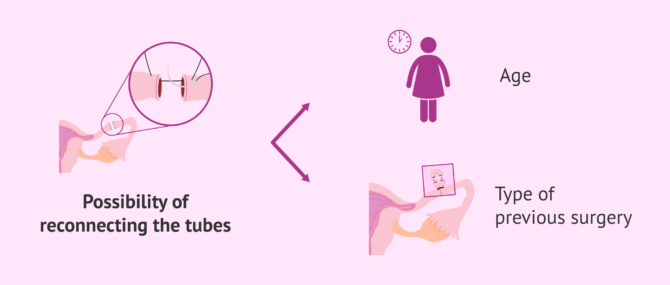
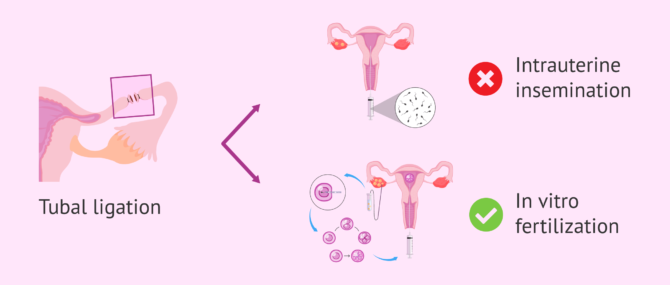
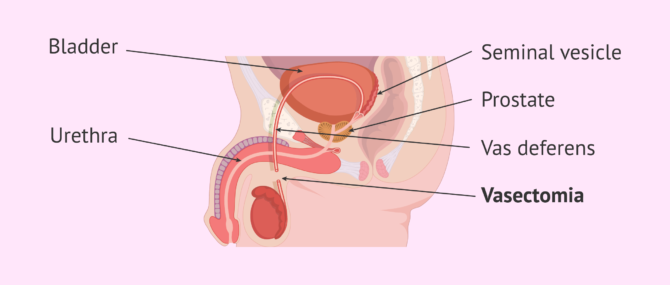
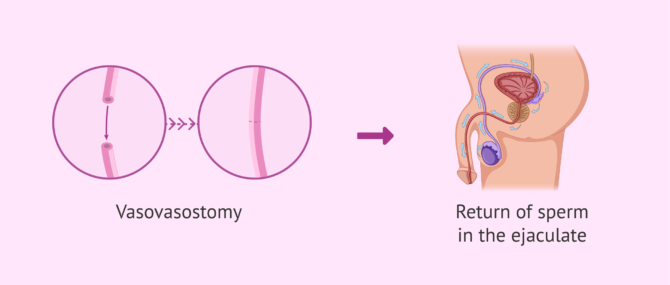
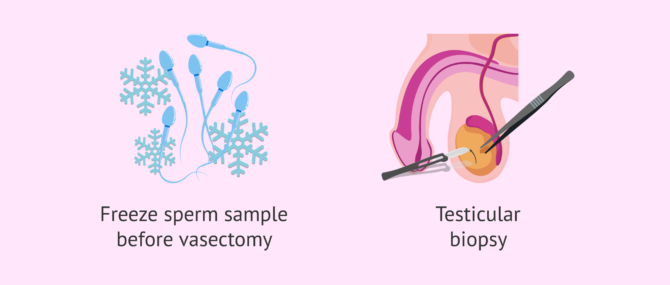




Hey there! My partner and I have 2 kids each from previous relationships and he says he definitely doesn´t want any more! We are both in our 40s now and I think he is probably right.
I was wondering which was the best options, me getting my tubes tied or him getting the snip, and after reading your article you have helped me make up my mind. Vasectomy for him!
Thanks and keep up the good work with the articles.
Hi, can I get my tubes tied on the NHS? Thanks